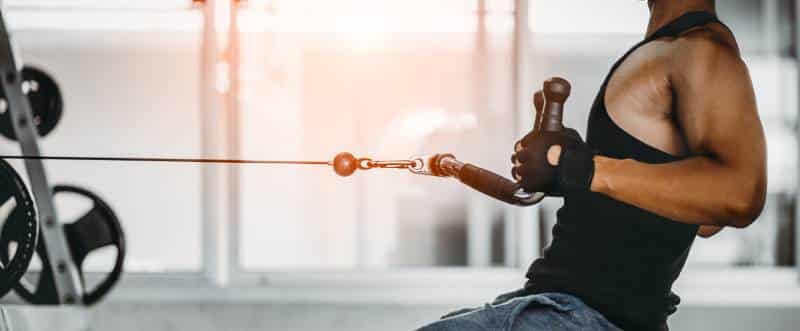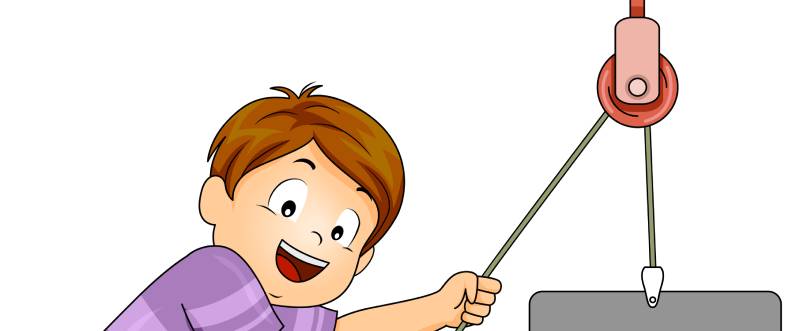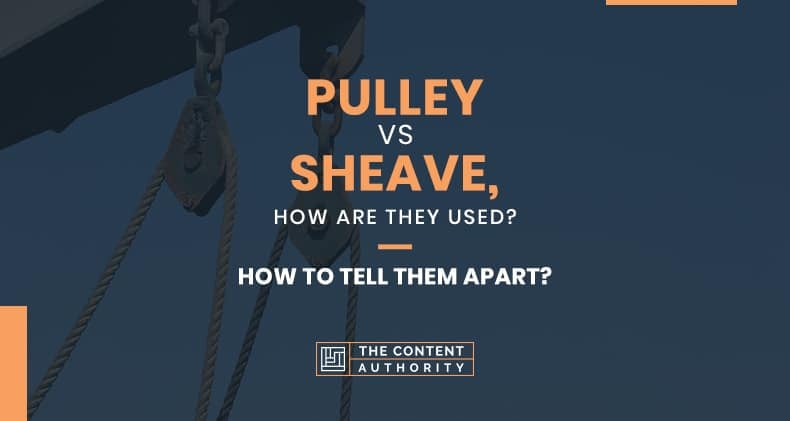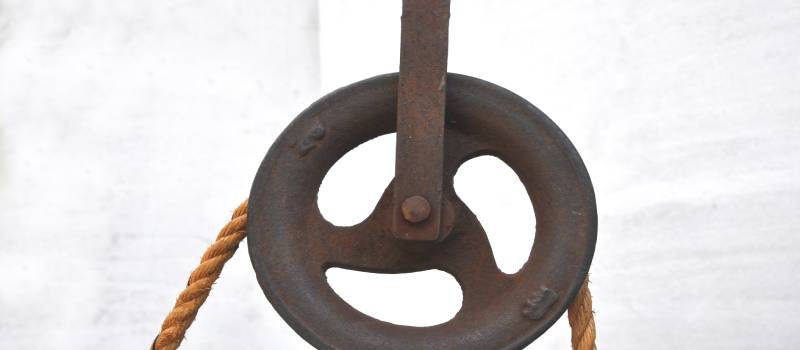Not everything that we do to fix or modify something is possible by our means. Therefore, we need tools and systems that help us get the job done.
A pulley is a system consisting of a wheel installed on an axle or shaft. It helps support movement, direction changes, or power transfer between its parts. These are the shaft, cables, ropes, and belts. A sheave is a piece of the pulley. Meaning is the grooved, rotating wheel that the rope is fitted inside.
Several jobs require physical force to be performed. For example, some tasks demand an amount of power for moving an object that no human being can manage. Suppose you add the amount of time needed to do those tasks due to the level of difficulty related to it. Then, it becomes a challenging, slow, and demanding endeavor.
What Are Simple Machines?
Before we continue to learn about pulleys and sheaves, we have to learn about “simple machines.” What are those? We know them as “tools,” namely, common metal, wood, and plastic tools.
Tools work like an extension of our bodies, making the task easier. Remember that when you need to lift, loosen, pull, cut, or apply force to hard surfaces. But our bodies aren’t hard. Instead, we have flesh that makes us relatively soft. So even if your hands and fingers have calluses, they are not as hard as a metal tool, much less pointy, or hard enough as a screwdriver.
We need different sizes of tools for various tasks, but in the main principles of simple machines, size doesn’t matter. Why? Because a giant earthmover machine and a wrench apply the same principles of physics. We may think they are different, but they are not.
What are “machines”? From the name only, a big mechanical construction thing comes to mind. But, in reality, a machine is anything that multiplies a force.
Our kitchens are filled with machines. We have forks, knives, and tools that ease the process of preparing food, such as a lemon squeezer. We can squeeze a lemon with our hands. But using tools makes it easier, faster and we get more juice out of the fruit. The squeezer multiplies the force we apply to it, and it is then transferred to the lemon. This allows us to get more product for our money, saving us money in the process.
Mainly, there are five types of simple machines:
- Wheels and axles (which count as one).
- Levers.
- Ramps and wedges (which also count as one).
- Pulleys.
- Screws.
As a side note, the lemon squeezer is a lever.
In the following section, we will expand on each one of the previously mentioned types of machines:
- Wheels and axles: Invented around 5,500 years ago in the Middle East. It changed history because we could transport heavy loads faster and with less effort, thus reducing friction with the floor.
- Levers: The simplest machine. It is a long bar that helps us exert a more prominent force when it’s turned.
- Ramps and wedges: These are almost self-explanatory. A boat ramp, for example, works by helping us get a boat out of the water. Instead of lifting it, we pull it gradually, elevating it on the ramp. So we cover more distance but use less force.
- Screws: In science books, they say that a “screw is like a ramp encircled. It means that it applies a similar principle to the ramp. The screw’s head works like a lever or a wheel because the head is bigger than the bottom. Therefore, every time we turn the head, the smaller bottom turns with greater force to get into the surface. As a result, it multiplies the power.
- Pulleys: These are powerful lifting machines that work with two or more wheels together and a rope wrapped around them many times. The more coiled the rope is the more “mechanical advantage” or lifting power you get. For example, if there are three or four wheels and ropes, the lifting power that it will have will be equal to three or four ropes around the load. In reality, even if we can lift three or four times an amount, we have to be able to pull three or four times the length of the rope.
As we can see, machines are present in every aspect of our daily lives. Once we understand their system, it is hard not to spot them. For example, we carry around a collection of levers, our bones.
Origin Of The Words
Let’s see the origin of both terms to see which languages gave us those words.
Pulley: It comes from several old versions of different languages, like Old and Middle English with “pullian” and “pullie,” “polley” (1150 to 150 Latin, Old French with “poulie, polie” (800-1400 AD). Connected to medieval Latin and Dutch with “polegium,” “polegia,” “polea,” and “puleye.” Old English (“to pull”).
Sheave: It comes from proto-Germanic (500 BC) “Scheibe”(disk).
The origins of this word, according to some researchers, are probably older than pulley because it also has another meaning, “bundle.”
How People Use Them

Like several words in the English language, pulley and sheave are often used depending on the context. Factors like industry standards and geographic location affect how we use them, sometimes giving the same definition to both even though they are different. For example:
- A sheave for a homeowner or a business owner is a smooth pulley for use with a v-belt, cable, or rope.
- A pulley for a home or a business owner is, commonly, a timing pulley, which works with a timing belt to create a non-slip, synchronized transmission movement.
- Marine engineers distinguish both words depending on the system they are installing.
- Outdoor power equipment manufacturers regularly consider the two words as equals.
- Sheave is more prevalent in the Midwest.
- Pulley is more prevalent along the coasts.
All of those situations affect the way people refer to both terms. The reality is that both a sheave and a pulley are parts of the same system. If we use a fixed pulley without a sheave, we only change the direction of the force needed to move the object, but that doesn’t reduce the amount of energy required. We have to use multiple sheaves to have the mechanical advantage that I mentioned before. We reduce half of the original force needed to move the object with every extra sheave we add to the pulley system.
Examples Of The Words In Sentences

- The belt is usually made of rubber and a pulley of hard metal.
- When I heard the screeching of the door pulley and rapid footsteps in the hall, I knew I was not home alone.
- The closer I am to the pulley, the stronger I feel. Is it the other way around? I can’t remember.
- It is usual to use a pulley to keep the rope tightened when the pull of the weight reduces.
- The chain guided by sheaves is the star of the action.
- The engine keeps running because of a belt and pulley.
- A climber needs a fixed rope and a pulley for rescues.
- Do you know what a pleasing touch is? A pulley on the motor shaft. Oh, sweet engine lord in heavens!
- One pulley was great, but this new machine has several. The load feels as light as a feather.
- Gym machines are often filled with pulleys that reduce weight. I thought I was stronger, but the free lifting area gave me a down-to-earth lesson.
- Want to know what a block is? It is a case containing multiple sheaves.
- If you don’t add a sheave to that pulley, the rope will break for sure.
- That ball went in like a rope on a sheave. Smoothly.
- I wonder if I can use four sheaves instead of wheels in a car.
- You and I are like a pulley and a sheave. We run without each other well, but we function better together.
- To lift that box, first, you have to put the rope back in the sheave because it is stuck.
- That pec deck machine has four sheaves in the system. According to the numbers, I’m lifting 300 pounds, and I’m still weak when I go to the bench press.
- It would be best if you reduced friction by removing a sheave.
Conclusion
A pulley system helps to lift heavy stuff. A sheave is a part of that system that makes it more efficient. It can work without it but runs better with it. Pulleys and sheaves are everywhere like all simple machines. We have to pay more attention to our environment and be amazed at our human inventions.
Shawn Manaher is the founder and CEO of The Content Authority. He’s one part content manager, one part writing ninja organizer, and two parts leader of top content creators. You don’t even want to know what he calls pancakes.


